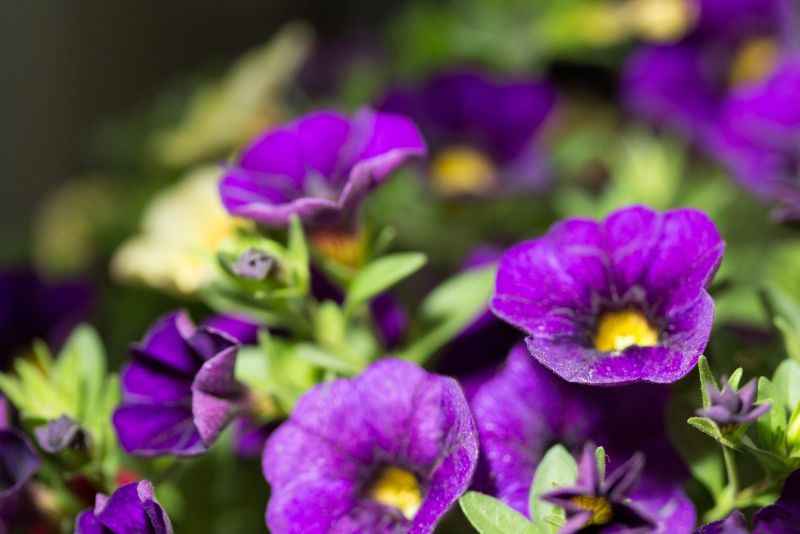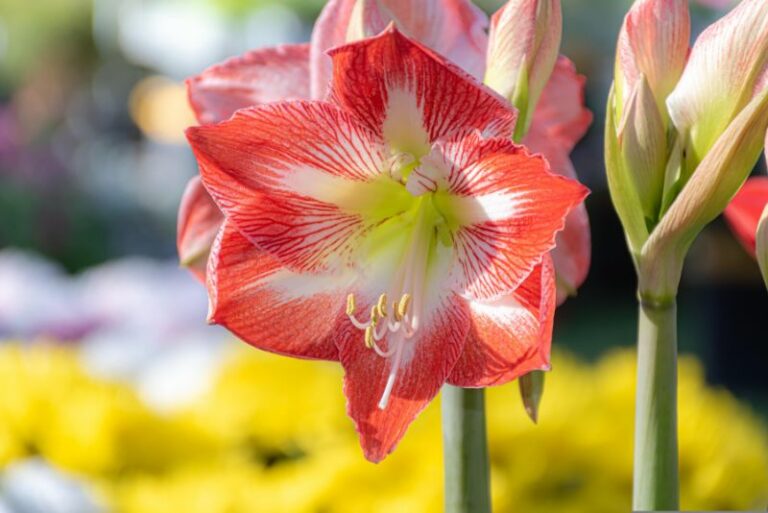How to Grow Calibrachoa (Million Bells): A Gardener’s Complete Guide
Welcome to the world of Calibrachoa, commonly known as Million Bells, a garden favorite celebrated for its cascading blooms and versatility. For gardening enthusiasts looking to enhance their outdoor spaces with a bounty of colorful flowers, this trailing perennial is a must-have. From planting to pruning, this comprehensive guide will walk you through every step of cultivating a thriving Calibrachoa garden. Whether you’re a seasoned green thumb or a newbie plant parent, you’ll learn the secrets to growing these bell-shaped blossoms like a pro.
Calibrachoa is often likened to miniature petunias due to its strikingly similar flowers but offers a unique appeal all its own. Its compact, bushy growth habit and ability to spill over containers or spread across the ground make it a standout choice for hanging baskets, planters, and window boxes. With the right care, you can expect your Calibrachoa to bloom from spring until the first frost, providing a continuous display of vibrant, trumpet-shaped flowers in a rainbow of hues.
Why Gardeners Love Million Bells

Gardeners are drawn to Calibrachoa for its:
- Compact Growth: Low maintenance and great for small spaces.
- Continuous Blooms: An abundance of flowers that keeps on giving.
- Color Variety: An extensive palette offering numerous combinations.
- Versatile Uses: Perfect for hanging, containers, and ground covers.
Now, let’s dig into the dirt on how to keep your Million Bells ringing with blossoms all season long.
Getting Started with Calibrachoa
Before you can enjoy the delicate cascade of flowers, you must lay a strong foundation for your Calibrachoa plantings. This section focuses on pre-planting considerations, such as selecting the right variety, finding the ideal spot in your garden, and setting up the environment for success.
Selecting the Perfect Calibrachoa Variety
Calibrachoa cultivars come in a spectrum of colors from soft pastels to vibrant neons. When choosing a variety, look for those labeled as heat-tolerant if you live in a warmer climate, or for ones that boast strong trailing habits for hanging baskets and edge plantings. Most importantly, ensure you’re getting a healthy plant from a reputable source, which is the first step toward a blooming bounty.
Ideal Growing Conditions for Calibrachoa
Million Bells thrive when certain environmental conditions are met:
- Sunlight: A location receiving at least 6 hours of direct sunlight per day is best for optimal blooming.
- Temperature: A warm, consistent temperature range without extreme fluctuations is ideal.
- Moisture: Well-draining soil that retains moisture without being waterlogged.
- pH Balance: Slightly acidic soil with a pH of 5.5 to 6.0 is preferred.
- Space: Ensure adequate room for your plants to spread and cascade, typically 12 to 24 inches apart depending on the variety.
Choosing the Right Location
Survey your garden for an area that meets the sunlight and space requirements for your Calibrachoa. Consider the visual impact as well, as these plants are a center of attraction when in full bloom.
Planting and Care Tips
Planting your Calibrachoa is just the beginning; what comes next is equally important to ensure its health and vibrancy. This section provides tips for soil preparation, proper planting techniques, and ongoing care.
Soil Preparation and Planting Techniques
Good soil is key to a happy Calibrachoa. Start by:
- Loosening the Soil: Use a tiller or garden fork to loosen compacted soil.
- Amending with Compost: Mix in a generous amount of compost to improve soil structure and nutrient content.
- Installing Raised Beds or Containers: For gardens with poor drainage or limited space, raised beds and containers filled with quality potting soil may be a better option.
- Planting Depth: Calibrachoa prefers to be planted at the same depth as it is in the pot, or slightly higher. Be sure to cover the roots fully but avoid burying the stem.
Watering and Fertilizing Guidelines
After planting, your Calibrachoa will benefit from a consistent watering schedule and regular feeding:
- Initial Watering: Water thoroughly right after planting to settle the soil.
- Weekly Watering: Keep the soil consistently moist, but not soggy. In hotter, drier climates, you may need to water more frequently.
- Fertilizer: Use a balanced, slow-release fertilizer to feed your plants every 6 to 8 weeks. Be cautious not to over-fertilize, which can lead to excessive foliage at the expense of blooms.
Pruning and Deadheading for Healthy Growth
Regular maintenance ensures your Calibrachoa stays in top form:
- Pruning: If your plant starts to look straggly or loses its shape, give it a trim. Cutting back up to 1/3 of the plant can help maintain a bushy, full appearance.
- Deadheading: To encourage continuous blooming, remove spent flowers by pinching back to a node with your fingers or using shears.
Dealing with Common Pests and Diseases
Like all plants, Calibrachoa is susceptible to certain pests and diseases:
- Pests: Keep an eye out for aphids and whiteflies, which can typically be controlled with insecticidal soap or neem oil.
- Diseases: Proper spacing, good air circulation, and avoiding overhead watering can help prevent issues such as botrytis and root rot.
Seasonal Care Guide
Each season brings new tasks for keeping your Calibrachoa healthy and thriving. This section provides a seasonal breakdown of tasks to focus on.
Spring: Preparing for Growth
- Check for Frost: If there’s a risk of frost, protect young plants with a covering.
- Prune Overwintered Plants: Trim dead or damaged growth from the winter months.
- Remove Winter Mulch: Clear any mulch used to protect the plants from the cold.
Summer: Maintaining Blooms
- Watering: Adjust your watering frequency as temperatures rise, keeping the soil damp but not waterlogged.
- Fertilization: Feed every 6 weeks with a balanced fertilizer.
- Pruning: Continue to remove spent blooms to keep the plant looking tidy.
Fall: Transitioning for Winter
- Reduce Fertilization: Gradually decrease feeding to help the plant transition to a period of dormancy.
- Stop Pruning: Avoid hard pruning as the plant enters its dormant phase.
- Bring Indoors if Necessary: In cooler climates, consider bringing hanging baskets indoors before the first frost.
Enhancing Growth and Blooms
To take your Calibrachoa display to the next level, consider these additional strategies for promoting luxurious growth and spectacular flowering.
Tips for promoting flowering
- Pinching Early On: Encourage branching and a fuller shape by pinching back young plants when first planted.
- Consistent Care: Be diligent with watering and fertilization; consistency is key.
Companion Planting
Pair Calibrachoa with other annuals and perennials. Companions should have similar sun and water needs and provide a pleasing contrast or compliment to the flowers.
- Interspecific Geraniums: They share similar care needs and offer a complementary growth habit and flower shape.
- Lobelia: Plant cascading varieties in the same container for a stunning combination.
Creative Container Gardening Ideas
Calibrachoa is perfect for creating unique outdoor displays.
- Layering: Combine Million Bells with upright plants and trailers for a layered look that is both interesting and attractive.
- Themed Planters: Choose a color theme and build a container garden that showcases differing hues of your favorite shade.
Conclusion
Calibrachoa, the Million Bells, holds the potential to transform any garden into a lively oasis of color. By following the steps outlined in this comprehensive guide, you can cultivate a stunning display of tiny trumpet blooms that will keep your garden singing with joy. Remember, patience and care are the most beautiful things you can give to your garden. Enjoy the process, and revel in the sight of your flourishing Calibrachoa plants.






